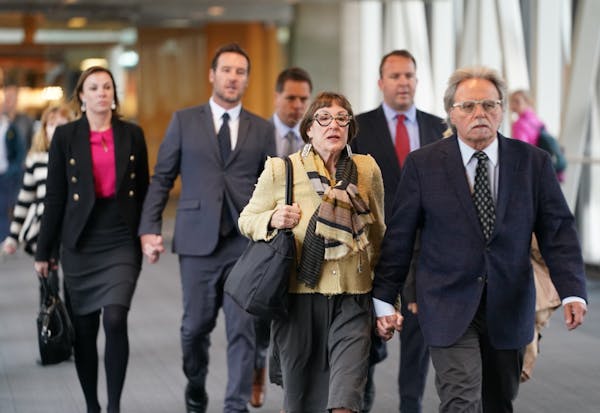As former Minneapolis police officer Mohamed Noor awaits sentencing, hundreds of pieces of evidence and hours of body camera footage remained in the court's possession Wednesday and out of the public eye.
The state courts' own rules require them to make evidence — including videos and photos — public at the conclusion of a trial, but judges have discretion on the timing, just as they do on the release of the names of jurors on a case.
Noor was found guilty Tuesday of third-degree murder and second-degree manslaughter in the shooting death of Justine Ruszczyk Damond, an unarmed woman who called 911 about a possible sexual assault in progress behind her home. Judge Kathryn Quaintance presided over the monthlong jury selection and trial and maintains control over the hundreds of pieces of evidence, along with the names of jurors.
There is no explicit deadline for the release, and data access advocates say there are two separate sets of requirements. Minnesota courts follow their own rules regarding release of evidence. A state law, the Data Practices Act, governs documents produced by the state Bureau of Criminal Apprehension (BCA), the investigating agency in the Noor case.
Mark Anfinson, a First Amendment attorney, cited the Data Practices Act's requirement that, "investigative data presented as evidence in court shall be public … unless there is a compelling reason to restrict access."
But the courts, as a separate, independent branch of government, have another set of rules, Anfinson said.
"In theory," he said, "Judge Quaintance could issue an order saying she is going to delay public release of these records for a brief period of time. She'd have to explain what she believes is good cause" for the delay.
Hennepin County District Court spokesman Spenser Bickett said Quaintance is reviewing the release of trial exhibits and juror names. "An order will be forthcoming," he said, declining to give a time frame.
Don Gemberling, a spokesman for the Minnesota Coalition on Government Information and former director of the Data Practices Office, the state office regulating information, said that under the court's own rules, evidence should be available "within a reasonable time," which, he said should be "just a few days."
The court can produce copies rather than originals and that could take some time with all the body camera video, he said.
"It comes down to how well-prepared Hennepin County is to respond to these requests for information," he said, adding that the judge also could attempt to withhold release pending an appeal.
Jill Oliveira, spokeswoman at the Department of Public Safety, which oversees the BCA, said the investigative data are not public under Minnesota statute until Noor's "exhaustion of or expiration of all rights of appeal."
She added that BCA investigative data are different from evidence presented during trial. "Release of items presented in court by the Hennepin County Attorney's Office during the trial would be through their office or the courts," she said.
Last month the Star Tribune requested the body camera videos and autopsy photos from the Hennepin County Attorney's Office and the Minneapolis Police Department.
The requests were made after Quaintance said she wouldn't show those items to the public gallery in the courtroom. After a challenge from a media coalition, she reversed the decision and allowed the items to be viewed during trial.
The city and the county attorney declined to release the evidence themselves, saying that once it's admitted into evidence in court, then it falls under the judge's control.
Additionally, the Hennepin County Attorney's Office cited Quaintance's ruling that evidence would only be released at the conclusion of trial "within a reasonable time frame."
Rochelle Olson • 612-673-1747 Randy Furst • 612-673-4224

Want to share info with the Star Tribune? How to do it securely

'Safe recovery sites' would offer syringes, naloxone and more to people using drugs. The plan could be in peril.
New Minnesota GOP leaders seek peace with party's anti-establishment wing

Who is Republican Lisa Demuth, Minnesota's first House speaker of color?

